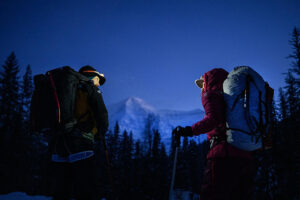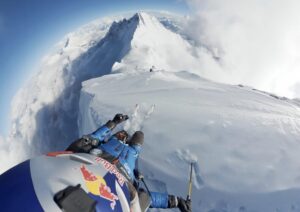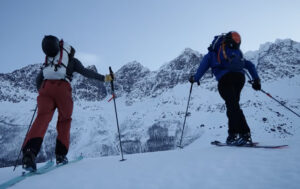Last Saturday, eight backcountry skiers were caught in an avalanche east of Salt Lake City, Utah. Four died. That same day, another avalanche in Montana’s Swan Range fatally buried a snowmobiler.
This alone would be enough to top the local evening news — but in fact, five other deadly avalanches also occurred in the U.S. during the first week of February, leaving 15 people dead. This is the largest casualty rate in a seven-day period since the 1910 Wellington avalanche that killed 96 people (the worst in U.S. history).
Since the beginning of the season, 21 have died in avalanches. Since the average annual number of avalanche deaths in the last 10 years is 29, 2021 could easily end up breaking a sad record in the country’s mountain areas.

Nearly 500 avalanches have been reported since January 29 in Colorado alone. Avalanche risk charts still show great parts of Colorado at a Level 3 hazard. Not the highest level, but statistically the one at which most problems occur. So why so many accidents?
In an interview with CNN, Nikki Champion of the Utah Avalanche Center described a “really dangerous snowpack”; specifically, a persistent layer of weak, loose snow at the bottom of the pack, caused by a comparatively light snowfall at the beginning of the season in November.
This layer had not stabilized under the weight of new snow falling on top of it. Utah and Colorado have experienced less snow in recent years, the forecaster explained, so this is not the first time that a weak under layer has taken weeks to settle down.
In fact, Champion referred to the feared “faceted” snow, in which the originally round snowflakes change their shape from roundish to a cup-like faceted form which bonds poorly. New snow then covers this danger layer.
This layer stabilizes later in the season when temperatures rise and the whole pack changes its consistency, as typically happens in coastal areas or warmer climates. But in continental, cold-weather areas, that weak layer may remain for weeks or even for the whole season.

Snow facets forming a weak layer. Photo: Snowbrains
The western United States is not the only area that has been suffering higher than usual avalanche conditions. Meteorologist Karl Gabl, a resident of Sankt Anton am Arlberg (one of Austria’s best-known ski resorts), has witnessed some dangerous conditions in his home mountains recently. “We have just had some really big snowfalls, and you have to wait for some days until the snow settles,” he told ExplorersWeb. “Some people are just too impatient, and then accidents happen.”
In fact, accident rates in the European Alps at the beginning of February were also alarming, with a total of 50 people dead in avalanches since the beginning of winter. That is more than half Europe’s annual average, and there are still six weeks of winter ahead.
Additionally, the spike in accidents is also due to a larger number of people in the backcountry. Around the world, COVID-19 restrictions have hit some leisure options hard, from working out in gyms to dancing in crowded clubs. By comparison, outdoor sports have seen a tremendous boost, especially among inexperienced people.
Moreover, the closure of several ski resorts and the limited access to others has encouraged an increasing number of skiers to attempt ski touring, which is practiced off the groomed trails and well-controlled ski runs. While not a new trend, ski touring has seen an unprecedented bump this season in the U.S., Canada, and Europe, where most ski resorts are closed or at best, limited to skiers living in the surrounding villages. Many of the trail-blazing rookies are, unfortunately, not familiar with the essential precautions to be taken when heading into the wild, far from the lifts, the cozy bars, and the emergency services.
Ski touring is, in the end, a mountain activity, subject to the (sometimes merciless) rules of winter mountaineering, which happens to involve using skis. It’s not merely downhill skiing. Such activities require their own techniques, knowledge, specific gear, and a great deal of practice. And not even the most seasoned skier can assess every situation, as we sadly saw yesterday when Nanga Parbat skier Cala Cimenti died in an avalanche while ski touring in the Italian Alps.
Finally, check this video where Doug Chabot, a Montana avalanche official, explains the characteristics of a recent skier-triggered avalanche.






